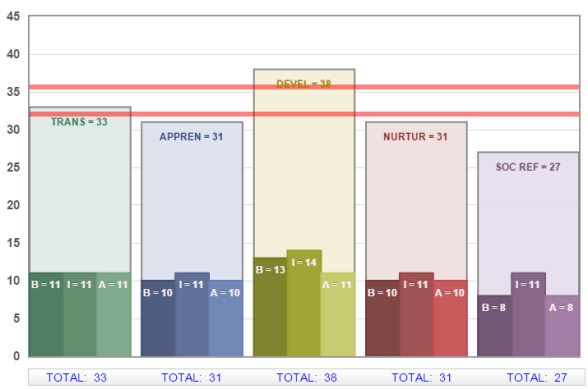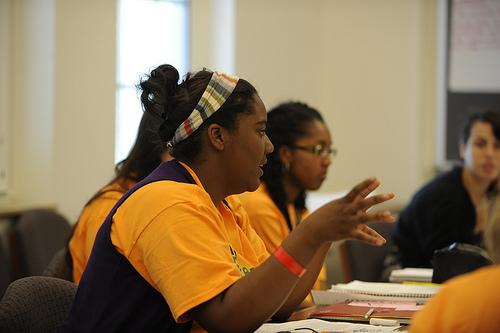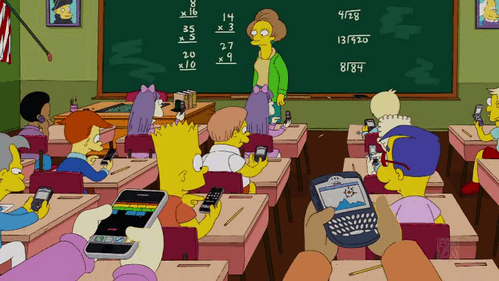Yesterday, December 7, 2014 — an anniversary for a date which will live in infamy. 73 years ago the United States was suddenly and deliberately attacked by naval and air forces of the Empire of Japan.
More recently, many of my colleagues at Augustana (on a trimester calendar) felt suddenly and deliberately attacked by pen and paper missives of the Empire of Their Students. All too soon, those of you on semester calendars will have your own students complete the dreaded SRIs (student ratings of instruction), and immediately start speculating on whether or not that surly, detached kid in the back row will nuke you as you anticipate he will.
Student course evaluations can be a valuable source of information — not just as summative assessment for department chairs and T&P committees who evaluate your work as a teacher, but as formative assessment for you, the teacher, who can use the data you receive to reflect on your classes, locate your current strengths and revise and tweak where you can. But all the positive data in the world, any collection of bright and shiny open-response affirmations from students can be overshadowed by the one or two negative responses that invariably turn up like bad pennies. All too often it is the this “bring on the rage, bring on the funk” moment of reading student course evaluations that keeps us from engaging them with open-minded inquiry as education professionals.
After a brief hiatus, APP is back with what is hopefully a timely chunk of advice! Isis Artze-Vega, an educational developer from Florida International University, provides a healthy perspective and valuable tips for engaging your SRI responses productively in the latest Faculty Focus. The day you get your summary report and completed forms need not live in infamy… indeed, it may be the first day of the rest of your continuing improvement as a teacher.
_____________________________________________________________
DECEMBER 8, 2014
By: Isis Artze-Vega, EdD in Faculty Evaluation
 Reading students’ comments on official end-of-term evaluations—or worse, online at sites like RateMyProfessors.com—can be depressing, often even demoralizing. So it’s understandable that some faculty look only at the quantitative ratings; others skim the written section; and many others have vowed to never again read the public online comments. It’s simply too painful.
Reading students’ comments on official end-of-term evaluations—or worse, online at sites like RateMyProfessors.com—can be depressing, often even demoralizing. So it’s understandable that some faculty look only at the quantitative ratings; others skim the written section; and many others have vowed to never again read the public online comments. It’s simply too painful.
How else might you respond? Here are seven suggestions for soothing the sting from even the most hurtful student comments:
1. Analyze the data. First, look for outliers: anomalous negative views. In research, we would exclude them from our analyses, so you should do the same for uniquely mean-spirited or outlandish comments.
Next, find the ratio of positive to negative comments to get an overall picture of student impressions. Better yet, categorize remarks: Are students responding negatively to your assignments? The course readings? A particular behavior? Identifying themes will help you determine whether they warrant a response. If multitudes of students note that they didn’t know what was expected of them or that you were disorganized, you’ll want to reflect on the area(s) identified. What might have given students that impression? And what steps might you take to improve or to alter their perception?
The recent New York Times piece “Dealing with Digital Cruelty” offers additional ideas for responding to mean-spirited online comments. Some of those suggestions are woven into numbers 2-5 below.
2. Resist the lure of the negative. “Just as our attention naturally gravitates to loud noises and motion, our minds glom on to negative feedback,” the article explains, adding that we also remember negative comments more vividly. This finding itself is comforting. If we catch ourselves dwelling on students’ negative feedback, we can consider: Am I focusing on this because it’s “louder,” or because it’s a legitimate concern? If it’s the latter, revisit the ideas in suggestions 1 and 3. Otherwise, skip to 4 and 5 below.
3. “Let your critics be your gurus,” suggests the New York Times piece. It explains we often brood over negative comments because we suspect they may contain an element of truth. Rider University psychology professor John Suler advises us to “treat them as an opportunity.” Ask yourself, “Why does it bother you? What insecurities are being activated in you?” “It’s easy to feel emotionally attacked,” adds Bob Pozen, a senior lecturer at the Harvard Business School and senior research fellow at the Brookings Institute, “but that doesn’t mean your critics don’t have a point.”
4. Find counter-evidence. When you encounter a negative comment, look for (or recall) comments that contradict it—whether positive feedback from other students or a colleague. “Disputing to yourself what was [written]” can make “harsh comments… feel less potent” (Rosembloom, 2014).
5. Dwell on the positive ones. Because “it takes more time for positive experiences to become lodged in our long-term memory,” (Rosembloom, 2014) we should devote at least as much time to students’ positive comments as their negative ones. Plus, remembering your teaching strengths can motivate you to continue exhibiting the trait or design your courses a certain way. These positive sentiments, often heart-warming and gratifying, will also help you maintain a positive outlook toward students.
The New York Times article proposes another strategy, in the brief article segment about student evaluations. Psychology professor James O. Pawelski jokes that “bars would make a killing if at the end of each semester they offered ‘professor happy hours’ where teachers could bring their evaluations and pass the negative ones around.” He cautions that “Nobody should be alone when they’re reading these things.” That advice leads us to our next tip.
6. Read them with a friend. Whether a departmental colleague, relative, or a trusted center for teaching and learning staff member, a more objective party can help you make sense of or notice the absurdity of the comments because they’re not as personally invested in them.
7. Be proactive, especially if these comments will be the primary data used in decisions about your hiring, re-hiring, promotion, etc. In this case, revisit suggestion 1 above. If you don’t conduct this analysis yourself, you’ll be at the mercy of whomever is charged with your evaluation—and they probably won’t be as thorough. They too may focus on negative comments or outliers. Also, take the time to provide explanations about any off-the-wall student complaints, so that your reviewers don’t draw their own conclusions.
Ultimately, all parties involved—particularly academic leaders—should remember that, important as they are, student comments offer only one perspective on teaching. Thorough evaluation of teaching effectiveness requires that each of us reflect on our practices, examine artifacts from our courses (assignments, syllabi, etc.), and look closely at what our students know and can do upon completion of our courses. The proof, after all, is in the pudding.
Reference:
Rosenbloom, S. (2014, August 24). Dealing with digital cruelty. The New York Times.
Dr. Isis Artze-Vega, associate director of the Center for the Advancement of Teaching, Florida International University.
– See more at: http://www.facultyfocus.com/articles/faculty-evaluation/cruel-student-comments-seven-ways-soothe-sting/?ET=facultyfocus:e168:335619a:&st=email#sthash.k6XaIXfk.dpuf





 Reading students’ comments on official end-of-term evaluations—or worse, online at sites like RateMyProfessors.com—can be depressing, often even demoralizing. So it’s understandable that some faculty look only at the quantitative ratings; others skim the written section; and many others have vowed to never again read the public online comments. It’s simply too painful.
Reading students’ comments on official end-of-term evaluations—or worse, online at sites like RateMyProfessors.com—can be depressing, often even demoralizing. So it’s understandable that some faculty look only at the quantitative ratings; others skim the written section; and many others have vowed to never again read the public online comments. It’s simply too painful.



 Yesterday I got an email from a faculty member who had just received her spring semester student ratings (yes, in August, but that’s a topic for another post). She’d gotten one of those blistering student comments. “This teacher should not be paid. We had to teach ourselves in this course.” I remember another faculty member telling me about similar feedback, which was followed later with a comment about how the course “really made me think.”
Yesterday I got an email from a faculty member who had just received her spring semester student ratings (yes, in August, but that’s a topic for another post). She’d gotten one of those blistering student comments. “This teacher should not be paid. We had to teach ourselves in this course.” I remember another faculty member telling me about similar feedback, which was followed later with a comment about how the course “really made me think.”

